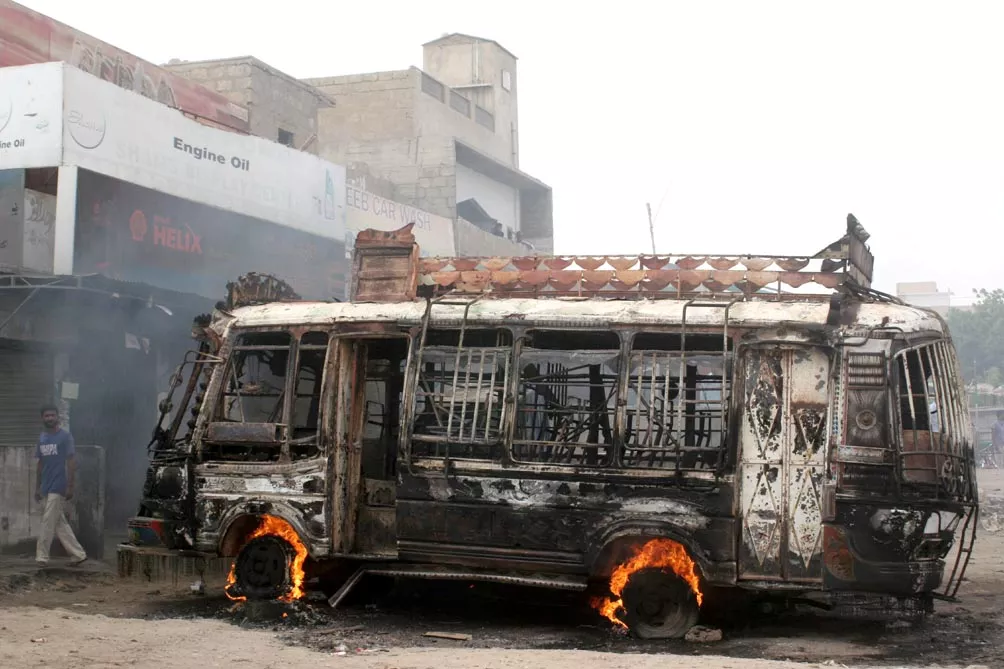Violence drops 32% in Q2 2025
Report highlights reduced fatalities and improved counter-terrorism

Pakistan has witnessed a significant 32% drop in overall violence in the second quarter of 2025, according to a report released by the Center for Research and Security Studies (CRSS).
The report highlighted key trends in the country's security landscape, including a marked reduction in fatalities, strategic improvements in counter-terrorism efforts, and concerning signs of militancy spreading into previously calmer regions.
The report revealed that fatalities from violence dropped to 615 in Q2, 2025, down from 900 in Q1, indicating a clear trend toward a safer environment. The 273 incidents recorded included terrorist attacks and counter-terrorism operations, with a total of 388 injuries reported.
The report further highlighted that fatalities declined by 32% compared to Q1 2025, with the number of fatalities from violence dropping by 285, from 900 in Q1 to 615 in Q2. This shift reflects more effective counter-terrorism efforts, with a higher percentage of outlaws dying in security operations.
While violence receded in traditional conflict zones, the CRSS report showed that Khyber-Pakhtunkhwa (K-P) and Balochistan provinces continued to bear the brunt of the violence, although incidents declined significantly.
K-P saw a 32% reduction in violence, with fatalities dropping from 567 in Q1 to 389 in Q2. This is attributed to successful state-led military operations against terrorists such as the Tehrik-i-Taliban Pakistan (TTP).
Similarly, violence in Balochistan decreased by 40%, with fatalities falling from 317 in Q1 to 190 in Q2. However, Balochistan remains a hotbed of unrest due to separatist militancy and ongoing targeted violence, especially against state forces.
Despite these gains, K-P and Balochistan accounted for over 94% of all fatalities and 93% of the recorded violent incidents in Q2 2025.
One concerning trend noted in the report is the spread of violence into previously quieter regions.
Punjab saw a sharp 162% rise in fatalities, from 8 in Q1 to 21 in Q2. Although the number of fatalities remained relatively low, this surge in violence raises alarms about the spread of militancy beyond the usual conflict zones.
Similarly, Azad Jammu & Kashmir (AJK), which reported zero fatalities in Q1, recorded six deaths in Q2, a worrying sign of instability in this traditionally peaceful region.
The report also shed light on the troubling reality that civilians continue to bear the brunt of violence. While the terrorists suffered the majority of fatalities, civilians were the most targeted group in terms of attacks and injuries. Of the 107 terror attacks, civilians were the victims in the majority of cases. They also sustained 249 injuries, a stark contrast to the 120 injuries suffered by security personnel.
The report underscored the disturbing trend that terrorists are aiming to disrupt daily life and instil fear among civilians, rather than focusing on more precise, strategic strikes against specific targets.
A key positive development highlighted in the report is the significant progress made in counter-terrorism operations. Terrorists, including militants and insurgents, suffered a greater percentage of fatalities compared to civilians and security personnel.
The percentage of fatalities among outlaws surged to 55% by Q2, 2025, compared to 35% during 2021-2024, reflecting the increased effectiveness of state-led counter-insurgency and counter-terrorism operations.




















COMMENTS
Comments are moderated and generally will be posted if they are on-topic and not abusive.
For more information, please see our Comments FAQ